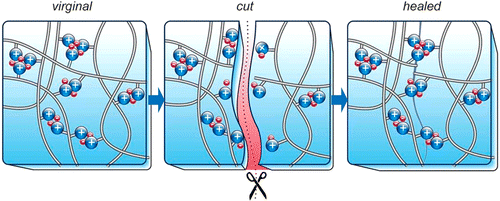‘Self-healing’ rubber suited to tyre applications

Nails, sharp stones and kerbs are the enemies of all tyres and have led to the premature demise of many. While smaller punctures can be mended, in many cases tyre damage results in the tyre being dismounted and discarded. But does this have to be the inevitable outcome of a meeting between tyre and sharp object? Researchers from the Leibniz Institute for Polymer Research Dresden and the Dresden University of Technology in Germany and the Tampere University of Technology in Finland believe they have come across a means of addressing the irreversibility of tyre damage.
In a their research article, ‘Ionic Modification Turns Commercial Rubber into a Self-Healing Material’, Amit Das, Aladdin Sallat, Frank Böhme, Marcus Suckow, Debdipta Basu, Sven Wießner, Klaus Werner Stöckelhuber, Brigitte Voit, and Gert Heinrich write about an alternative to the conventional method of producing tyre rubber, which employs sulphur vulcanisation to achieve cross-linked network structures.
The researchers describe their method as a “simple approach” that enables the conversion of commercially-available bromobutyl rubber (BIIR) into a “highly elastic material with extraordinary self-healing properties” without the use of conventional cross-linking or vulcanising agents.
“Transformation of the bromine functionalities of BIIR into ionic imidazolium bromide groups results in the formation of reversible ionic associates that exhibit physical cross-linking ability,” explain the authors in the article’s abstract. “The reversibility of the ionic association facilitates the healing processes by temperature- or stress-induced rearrangements, thereby enabling a fully cut sample to retain its original properties after application of the self-healing process.”
The researchers report that other mechanical properties, such as the elastic modulus, tensile strength, ductility, and hysteresis loss, were “found to be superior” to those of conventionally sulphur-cured BIIR. They believe this “simple and easy” approach to preparing a commercial rubber with self-healing properties offers “unique development opportunities” in the field of highly engineered materials, such as tyres, for which safety, performance, and longer fatigue life are crucial factors.
The full research article fired appears in ACS Applied Materials & Interfaces, a publication of the American Chemical Society, on 2 September 2015.


Comments